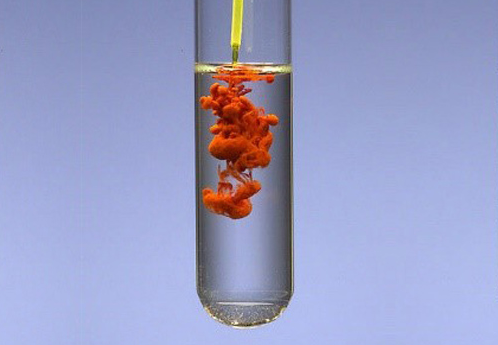The solubility product constant, $K_{ps}$, is the equilibrium constant established between the solid and its ions in a saturated solution. It is an equilibrium constant as a function of concentrations.
Since the activity of pure solids is 1, only species in solution participate in the equilibrium constant. Let's see an example:
Silver chromate is a highly insoluble salt that is formed by mixing potassium chromate and silver nitrate. In the solution, the following equilibrium is established:
$Ag_2CrO_4(s)\rightleftharpoons 2Ag^+(aq)+CrO_4^{2-}(aq)$
The constant of this equilibrium between the solid and the aqueous species is called the solubility product constant of silver chromate and is given by: \begin{equation} K_{ps}=[Ag^+]^2[CrO_4^{2 -}] \end{equation} As can be seen, the solid does not participate in this equilibrium constant. The concentrations must be equilibrium, that is, concentrations of the ions in a saturated solution. To be sure of said saturation it is convenient to have a precipitate.

The value of the solubility product constant for silver chromate is: $K_{ps}=1.1x10^{-12}$. The smaller the $K_{ps}$ is, the more insoluble is the salt.



